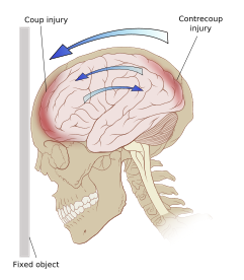Last time we covered core training and the Turkish Get Up. Another common injury in affecting an arrest, in BJJ and combative training is neck injuries. This not only occurs due to some of the submission defense techniques we learn but also on how we use our head as an additional appendage to control our opponent. There are many times where we use our head to aid in taking an opponent down. Where we may gable grip our hands behind our opponent and use our head to drive back as we sweep the legs out. Or we may use our head to control an opponent’s arm or shoulder when in the mount position or use our head as a base to prevent from being swept from mount position. We also may strain our neck when we work on our choke defense when someone does a rear naked choke from our back.
All of these examples can lead to a lot of strain on the cervical spine, especially if there is not sufficient strength in the neck to restrain this kind of stress. When the neck is strained like this, repeatedly over time, this can lead to not only neck pain but also can lead to:
- Difficulty sleeping at night – due to inability to get comfortable position
- Migraines – due to strain of the musculature of the neck
- Difficulty stabilizing the head or lifting your head off the floor
- Increased risk for concussion
- Shoulder/Upper Trap pain as you compensate with your movement
- Difficulty driving due to lack of range of motion of the neck
Studies have shown that lack of neck strength not only makes you more susceptible to neck injuries but also can make you more susceptible to concussions. Concussions occur when the brain contacts the inner portion of the skull in what we call a coup-contrecoup injury. When the head comes into contact with a fixed object, the skull stops but the brain on the inside keeps going and strikes the skull (coup injury). The brain then recoils back and then strikes the skull again (contrecoup injury). There are many factors that impact the severity of the concussion, one of which is the magnitude of the coup and contrecoup force.

If there is lack of strength of the neck then the head snaps forward at a much greater rate resulting in greater magnitude of both the coup and contrecoup injury. Considering, the greater the neck strength, the greater the risk there is for concussion. Same time, if the neck is injured/strained, this can also add to a loss of strength. Therefore, this would make you more susceptible to concussions.
One of the greatest tools I have encountered for improving neck strength in fighters, grapplers, tactical athletes and whiplash patients is the Iron Neck. This is an inexpensive tool that can be used during a variety of tasks. The Iron Neck has the ability to provide 360 degrees of resistance. Unlike traditional neck strengthening we did in wrestling; this is not flexion and extension dominate strengthening. This device allows you to work on stabilizing the neck while getting resistance from multiple directions. You can combine this with shoulder work, leg work, core work (planks and side planks) and with some defensive tactics (striking, single leg take downs, side shuffle, etc.)

This is one of the most effective tools in your tool box to address neck stability, strength and endurance. If you enjoyed, stay tuned as next time we talk about fatigue state training.
Author: Trent Nessler, PT, MPT, DPT, SVP, Ready Rebound Vitality
To Find Out More, Visit https://readyrebound.com/








Get Social